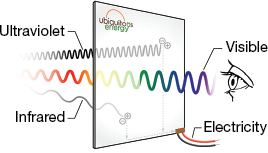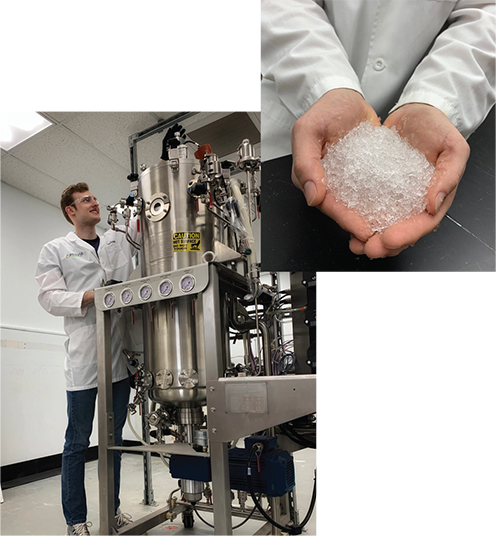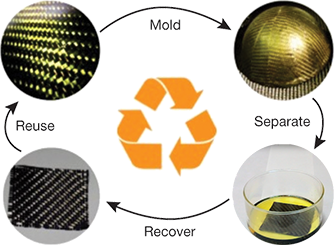The National Science Foundation (NSF) issues hundreds of grants every year to translate invention into impact. This article discusses some of the many NSF funding opportunities and profiles several organizations that have found success due, in part, to NSF funding.
In 1977, the National Science Foundation (NSF) launched a program to accelerate the growth of high-tech small businesses in the U.S. NSF, an independent federal agency, was established in 1950 to promote the progress of science; to advance national health, prosperity, and welfare; and to secure the national defense.
While its core focus is on funding basic research, NSF has long recognized the transformative power of small businesses in translating basic research, creating jobs, and increasing national competitiveness. Today, that small business program — known as Small Business Innovation Research (SBIR) — has spread to ten other federal agencies, and NSF has created a set of associated programs to help move discoveries from basic research to the marketplace.
With an annual budget of $8.1 billion in fiscal year 2019, NSF is the funding source for approximately 25% of all federally supported basic research conducted by America’s colleges and universities across fields such as social sciences, engineering, and the physical sciences (1).
NSF issues limited-term grants — currently about 12,000 new awards per year, with an average duration of three years — to fund research proposals that answer fundamental questions, test high-risk ideas, and develop entirely new solutions to important problems.
All NSF proposals undergo a rigorous and objective merit review process, considered by some to be the gold standard for vetting research proposals. An enormous amount of research, deliberation, thought, and discussion goes into each award decision.
NSF’s programs for technology translation provide researchers, entrepreneurs, and small businesses with resources to overcome technological and adoption risks, ultimately preparing them for the private capital marketplace. These programs ignite game-changing ideas and help move those solutions toward testing and deployment at scale.
These programs include: Industry-University Cooperative Research Centers (IUCRC), Innovation Corps (I-Corps), Partnerships for Innovation (PFI), INTERN, and the Small Business Innovation Research (SBIR) and Small Business Technology Transfer (STTR) programs (known as America’s Seed Fund).
IUCRC. The IUCRC program fosters collaboration between companies and universities. Centers pursue industrially relevant, basic research projects in collaboration with their strategic partners. These consortia work together to leverage funding to address shared technical challenges and find solutions for stakeholders across multiple disciplines and research communities.
Industry-University Cooperative Research Centers (IUCRC)
NSF IUCRCs develop long-term partnerships among industry, academia, and government to build research programs of mutual interest, generate transformative research knowledge for technology development, and enhance the preparation of a diverse engineering and scientific workforce.
Mechanics. Centers are virtual entities of constituent university sites and organizations that form a consortium around research in any area of science and engineering. Members may be for-profit businesses, nonprofits, or government agencies. NSF funds the Center’s operating costs, and members support the Center’s research costs.
Eligibility. Institutions of higher education, such as two- and four-year universities (including community colleges), can apply.
Statistics. Currently, the 70+ IUCRCs nationwide have a total of more than 200 research sites and 800 unique members. More than 25% of the approximately 6,600 students who trained in an IUCRC during 2008–2017 were hired by Center members. The program had an NSF budget of $20.5 million in fiscal year 2018; most Center funding comes from members. Each dollar in member contributions leverages about $33 in additional research funding.
I-Corps. NSF leads experiential education through the I-Corps program, which helps academic researchers develop skills to determine how their research can generate commercial impact. As a result, many of these research leaders and their students become entrepreneurs in startups or in large organizations.
Innovation Corps (I-Corps)
I-Corps helps prepare NSF-funded academic researchers to extend their focus beyond the laboratory by providing them with the practical entrepreneurial skills necessary to identify valuable product opportunities that can emerge from basic research.
Mechanics. Over seven weeks, an I-Corps team (entrepreneurial lead, technical lead, and mentor) receives entrepreneurial training and $50,000 for customer discovery. As part of their hands-on experience, teams complete at least 100 customer interviews.
Eligibility. Applicants must be or have been a principal investigator (PI), co-PI, postdoc or senior laboratory personnel on an NSF award active within the last five years, or have completed a regional NSF I-Corps training program run by an I-Corps site or node.
Statistics. Since its inception in 2011 through Dec. 2018, 1,315 I-Corps teams (a total of 3,745 people) have received NSF I-Corps training, which has resulted in the creation of 644 startups and $301 million in follow-on funding across all disciplines of engineering and science. Its budget in fiscal year 2018 was $33 million.
PFI. Through the PFI program, NSF supports advanced research to translate inventions into impact. PFI pairs an academic team with a private-sector partner to create a proof-of-concept with strong commercialization potential. These multidisciplinary teams can then participate in the I-Corps program to develop additional skills in identifying and executing research pathways toward technology translation.
Partnerships for Innovation (PFI)
PFI gives engineers and scientists the opportunity to increase the impact of their NSF-funded research discoveries by developing their technology into a prototype or proof-of-concept.
Mechanics. PFI accepts proposals in two broad tracks:
- Technology Translation (PFI-TT, up to $250,000 for 18 months) supports commercial-potential demonstration projects for academic research outputs in any NSF-funded engineering and science discipline.
- Research Partnerships (PFI-RP, up to $550,000 for 36 months) supports complex, multifaceted technology development projects that are typically beyond the scope of a single researcher or institution and require a multi-organizational, interdisciplinary, synergistic collaboration.
Eligibility. Recently funded researchers and I-Corps teams can apply.
Statistics. In fiscal year 2018, the program funded 61 awards with a budget of $20.7 million.
INTERN. NSF recognizes the importance of preparing graduate students and postdocs through the INTERN program. This program offers opportunities for emerging researchers to participate in technology development in industry and small-business settings.
INTERN
Through INTERN, graduate students who are currently supported by an NSF research grant have an opportunity to work in an industrial, government, or other non-academic research setting. Immersion and mentoring in new environments through NSF INTERN help prepare engineering and science graduate students for multiple career paths.
Mechanics. The NSF awards $55,000 per six-month period to support travel, tuition and fees, health insurance, additional stipend, and temporary relocation costs for the graduate student. The host organization provides no direct funding for the student.
Eligibility. INTERN funding is awarded as a supplement to almost any active NSF award that supports graduate students. Graduate students must have completed at least one academic year in their programs at the master’s or doctoral level.
Statistics. Approximately 450 students have received INTERN support since the start of the program in 2017.
SBIR/STTR. NSF is strengthening the innovation ecosystem through America’s Seed Fund investments. SBIR/STTR grants give about 400 small businesses a year the opportunity to impact the economy by commercializing their technologies. NSF provides funding, coaching, and access to a network of like-minded entrepreneurs.
Small Business Innovation Research (SBIR) and Small Business Technology Transfer (STTR) Programs
NSF’s SBIR and STTR programs award more than $200 million annually to startups and small businesses, transforming scientific discovery into products and services. Startups working across almost all areas of engineering and science can receive up to $1.5 million in non-dilutive funds to support R&D, helping de-risk technology for commercial success. SBIR and STTR at NSF are also known as America’s Seed Fund powered by NSF.
Mechanics. For Phase I, companies receive up to $225,000 over 6–12 months. For Phase II, they receive up to $750,000 over 2 years. Supplements are available for companies with a Phase II award — total funding available is approximately $1.5 million.
Eligibility. Small businesses (fewer than 500 employees) located in the U.S. can apply. A company applying for SBIR/STTR must be majority-owned by a U.S. citizen or resident.
Statistics. NSF funds approximately 400 Phase I and Phase II companies annually. Of the small businesses that have recently received a Phase I award: 85% have five or fewer employees, 72% were founded in past three years, >75% are first-time SBIR/STTR awardees.
In all these programs, NSF supports research and development across a wide breadth of technical disciplines. Funding has helped further innovations in areas such as diagnostic tools, biomedical systems, machine learning, batteries, clean technologies, additive manufacturing, advanced instrumentation, lasers and photonics, sensors, etc.
These programs offer critical resources that bridge the so-called “valley of death” — the funding gap between basic research and commercialization. The experiential learning programs help engineers and scientists generate new insights about industry in a low-risk setting to inform their research programs. When a commercialization pathway becomes clear, NSF offers funding specifically to help address the technical challenges inherent in developing a complex, transformative solution.
“NSF’s goal is not to buy a product, but rather to foster innovation and help the American economy by fostering commercial success and creating businesses and jobs in the U.S. that benefit society,” says Andrea Belz, the division director who leads NSF’s technology translation programs. “NSF wants to spark and feed innovations that grow from fundamental research and creative minds.”
NSF is strengthening the country’s innovation eco-system. NSF programs are the engine of technology creation for the nation, supporting the transformation of fundamental research into societal impact.
Success stories: How NSF helps startups reach new heights
The many funding opportunities available through NSF are helping to translate chemical engineering research into new technologies and innovations. These programs, like SBIR, STTR, and I-Corps, have helped countless startups refine their technologies, finance early-stage development, and fill a common financing gap that fledgling technology companies often face.
A new way to generate solar energy. “Early-stage funding for newly conceived materials technologies can be some of the most difficult to secure from traditional financial investors, because there is still substantial risk,” says Miles Barr, cofounder and Chief Technology Officer of Ubiquitous Energy. “NSF seed funding helped to finance some of our development during this crucial time, allowing us to demonstrate proof-of-concept and first prototypes that were instrumental in allowing us to deeply engage with the market to help grow our business and secure subsequent funding.”


▲Figure 1. Ubiquitous Energy designed its Clear-View Power technology so that it would transmit visible light and absorb ultraviolet and infrared light from the sun. It then converts that absorbed light into electricity.
Ubiquitous Energy is a leading developer of transparent photovoltaics. Its main product — ClearView Power technology — is touted as the world’s first transparent solar cell; it can coat any window or surface, harvest ambient light, and generate electricity (Figure 1). To date, the company has raised more than $25 million in funding. That’s quite a success story for an organization that is less than a decade old.
The company’s cofounders conceived Ubiquitous Energy in 2011 at the Massachusetts Institute of Technology (MIT). “We were imagining new ways of deploying solar energy,” says Barr. At the time, most solar cells were opaque or highly tinted. The team envisioned deploying completely see-through solar cells on the windows of buildings.
In 2013, they received STTR Phase I and SBIR Phase I awards from the NSF — funding that helped them scale up the size of their demonstration cells while simultaneously developing more-efficient and transparent materials to meet market demands. “When the idea was first conceived, our cells were around 1 mm2 in size and less than 1% efficient,” says Barr. “Today, we are making pilot building facades over 1 m2 and have formulations as high as 10% efficient.”
Ubiquitous Energy received an SBIR Phase II award in 2014 and has received supplemental funding for a total of $1.4 million, which allowed further scaling and optimizing of their ClearView Power product.
“Over the next year, we expect to deploy our first pilot projects in buildings around the world,” says Barr.
The startups and researchers that the NSF helps fund are at the forefront of sustainable development. Innovations like Ubiquitous Energy’s ClearView Power are paving the way for a diversified energy portfolio that will meet the world’s energy demands in the near future. Large-scale deployment of renewable technologies can only be achieved if the fundamental research and development is sponsored.
Homing in on market needs. Developing sustainable products was one of the top goals of Ecovia Renewables when it was founded. “Ecovia’s technology uses renewable biomass — such as waste glycerol from biodiesel production or starch glucose — to make a biopolymer that can be turned into top-performing water-absorbing materials,” says Nina Lin, cofounder of the startup.


▲Figure 2. Ecovia has developed a method to produce biopolymer products that mimic the structure and absorbency properties of conventional synthetic superabsorbent materials. These superabsorbents can be placed into diapers and other personal care products to make them completely biodegradable.
Ecovia’s biobased polymers could form the basis of next-generation absorbent personal care products — for example, enabling the production of completely compostable and biodegradable diapers (Figure 2). Adapting their biomaterials to meet the requirements of personal care goods and other applications could help greatly reduce landfill waste.
The startup was founded in 2014 to commercialize the research of Dr. Lin and Jeremy Minty at the Univ. of Michigan in Ann Arbor. Lin’s research originally focused on developing sustainable biofuels via engineered microbial ecosystems. In fact, she went through the NSF I-Corps program in 2013 to explore the commercial potential of this idea. The I-Corps program allowed her to learn firsthand about the many challenges associated with commercializing cellulosic biofuels. “I came to realize how important other factors, other than technology itself, are in translating technologies out of the lab,” says Lin. Ultimately, Lin and Minty decided to use their microbial co-culture technology platform to produce value-added chemicals, specifically a biopolymer, instead of biofuels.
In 2015, Ecovia received an NSF STTR Phase I grant for $225,000 — its first federal grant. “This provided the initial funding to get things started for the company,” says Lin, “including hiring the first employees and setting up basic lab facilities.” Two years later, an SBIR Phase II award helped the startup move its renewable biopolymer families — AzuraBase and AzuraGel — closer to commercialization. Today, Ecovia has received nearly $1.5 million total from NSF and is further optimizing its two product families, building strategic partnerships in additional market sectors, and gearing up for another round of fundraising.
“NSF funding has been crucial for Ecovia’s development since the very beginning,” says Lin. She asserts that the I-Corps program was a major factor in initiating Ecovia Renewables because it helped gradually expose her to the nuts and bolts of launching a business. It also has had major impacts on her research decisions. “I’ve become much more conscious in considering the potential for translation and commercialization when I define and approach research problems,” she says.
Disrupting the polymers industry. The I-Corps program was also instrumental in launching another startup — Mallinda — which has created a disruptive platform for rapid compression molding of thermoset composite parts.

▲Figure 3. A sheet of Mallinda’s prepreg composite can be compression molded into a desired shape within seconds. The composite part can be depolymerized back into monomer components and carbon fibers that are subsequently reused.
Mallinda’s technology relies on a new class of polymers called vitrimers, which are highly crosslinked network polymers that can be reversibly cured. Akin to sheet-metal stamping, manufacturers can take a piece of Mallinda’s prepreg composite and compression-mold it into a desired shape in seconds. When the polymer part reaches the end of its useful life, it can be depolymerized back into monomer components that are subsequently reused (Figure 3).
If the concept sounds complicated, that is because years of work went into its development. In fact, it took more than two years for Chris Kaffer, cofounder and CEO of Mallinda, to identify the startup’s key value proposition and fully refine the idea. He credits the seven-week I-Corps program with getting them on the right track. “Prior to I-Corps, we had only been thinking of our technology in the context of resin-specific applications,” says Kaffer. “During I-Corps, we realized that we could dilute the cost of our material by making composites, which necessarily have a much higher price point. Once we landed on developing composite materials, we began to explore the composites segment to see how we could impact/disrupt the market.”

Kaffer stresses that there is a need for lightweight, recyclable materials to replace legacy metals like steel and aluminum. To achieve greater fuel efficiencies in the cars of the future, he envisions replacing metal structural components in cars with lighter composite materials — for example, carbon-fiber-reinforced composites (CFRCs). CFRCs are as strong as steel from a tensile perspective, but are 70% less dense. This could enable major fuel efficiency gains in cars.
However, says Kaffer, these materials are not without their drawbacks. “The carbonization process is very energy-intensive … Thus, it is crucial to recover and reuse carbon fiber from end-of-life materials to reduce the carbon impact of material production.” Mallinda’s composites allow for the reclamation and reuse of the reinforcing fibers embedded within the vitrimer resin. “Our resin and composite technology truly is a cradle-to-cradle closed-loop system,” he says.
According to Kaffer, Mallinda may not have ever gotten off the ground without the support of the NSF. “NSF seed funding gave us a chance at survival,” he states. Their SBIR Phase I award of nearly $150,000 was relatively small, but crucial. “I can definitively say that we would not be around today if not for the Phase I SBIR.”
In 2016, they received an SBIR Phase II award and subsequent supplemental funding that totaled $1.4 million. “Phase II funding was critical for us on a couple of fronts. First, it allowed us to shift our initial Phase I development course to better align with industry needs,” says Kaffer. A second key advancement enabled by Phase II funding was demonstrating the material’s drop-in capabilities in high-volume production. “Our industrial production demonstration was an important milestone for investors.”
Mallinda is moving toward commercialization of its polymers, and plans to demonstrate the world’s first recyclable composite automotive part made in less than three minutes at the JEC Composites trade show in March 2020.
Unconventional energy storage. Another organization with technology well on its way toward commercialization is Rebound Technologies. Its key product, IcePoint, is an efficient, economical cooling system for industrial cold storage facilities that uses a proprietary freeze-point suppression cycle. The system integrates with existing freezer systems, but can deploy bursts of high-capacity cooling — an important development for mitigating peak energy expenses.


▲Figure 4. Rebound Technologies’ IcePoint system is an efficient cooling solution for industrial cold storage facilities that uses a proprietary freeze-point suppression cycle. This system has the potential to dramatically improve energy utilization throughout the global food-supply cold chain.
In essence, IcePoint is a thermal energy storage system. “Right now, cold storage and food processing facilities across the country create gigawatts of nearly constant electricity demand. If those facilities were running IcePoint systems, their demand could flexibly adapt to signals from the grid as if they all had large on-site batteries,” says Russell Goldfarbmuren, Chief Technology Officer and cofounder of Rebound Technologies. In addition, the freeze-point suppression cycle within IcePoint is more efficient than existing vapor-compression refrigeration cycles (Figure 4).
In 2018, Rebound Technologies successfully deployed a pilot system in Oxnard, CA. To date, the pilot system has had more than 5,000 hours of total runtime. Currently, the organization is mounting a full-scale system at a cold storage facility in southern Georgia.
Goldfarbmuren asserts that NSF funding was a big factor in driving this progress. “NSF seed funding is the primary reason Rebound is a growing company,” he says. “Moving development out of my garage would have been significantly more challenging, if not impossible, without our NSF SBIR.”
Rebound Technologies received its Phase I award in 2014, a Phase II award in 2015, and supplements — totaling more than $1.5 million. Phase II funding allowed the company to scale up the technology and gave them the necessary capital to have their prototype validated by a third party, Southern California Edison. From there, they were able to team with a customer in deploying the aforementioned pilot system. “This work allowed us to sharpen-up the design and reliability of the technology,” says Goldfarbmuren.
NSF funding was instrumental in developing and perfecting the technology underpinning IcePoint. “Much of the development effort was the team learning how to scale up the equipment and better understand the challenges of deploying in customer environments,” he says.
For example, when the Rebound team first created the freeze-point suppression cycle, they thought of a unique way to recycle waste heat to make the process more efficient. But, capturing that waste heat proved to be more complicated than first expected, so the team decided to forego that design in their final product. “Sometimes it’s better to take the simplest path to commercialize a technology, even at the expense of efficiency, knowing that your team can always return to explore the more complex approach at a later date,” says Goldfarbmuren.
Rebound Technologies’ upcoming full-scale system deployment will be an important step in making cost-effective energy storage a reality.
Advantages of NSF funding
The NSF is fostering innovation by fueling small businesses and startups. Organizations such as Ubiquitous Energy, Ecovia Renewables, Mallinda, and Rebound Technologies would look very different if not for early-stage NSF funding. NSF fills a niche role in technology development that is not met by other organizations, such as venture capital (VC) firms.
“NSF funding, or federal funding in general, provides crucial resources for the early stage of a startup,” says Lin of Ecovia Renewables.
One of the biggest advantages of NSF funding is that it does not require entrepreneurs to give up ownership of their company. “Even though the level of funding is relatively small compared to those from VC, the non-dilutive nature allows the founders to maintain full leadership, develop the company according to their values and visions, and grow the value of the company before fundraising in the private sector,” says Lin.
Ubiquitous Energy’s Barr affirms that the non-dilutive nature of NSF funding is beneficial because it allows grantees to retain equity for employees and future investors. “NSF also provides a great education and support ecosystem that can help grantees engage with partners and customers while developing and refining a strong business plan,” he adds.
In comparing NSF funding to venture funding, Goldfarbmuren of Rebound Technologies says that he doesn’t see much overlap. “There are vanishingly few venture investors willing to make any investments in early-stage companies like those that the SBIR program targets,” he states.
“The biggest advantage of NSF funding is that it is available to folks like us who had a single dataset they took off a prototype they built in a garage from their own personal savings,” says Goldfarbmuren. “That doesn’t happen with venture money right now.”
Kaffer, Mallinda’s cofounder, takes an even stronger stand. “Despite the conventional wisdom, hard tech companies seeking their first investment capital should not waste their time with traditional financial investors,” he says.
Kaffer emphasizes that because so much more capital is required to bring an engineering innovation or technology to market — than, for example, an app or software — entrepreneurs should hold off on VC funding until it is absolutely necessary.
Another key advantage of NSF funding is the validation of the technology that comes with winning the awards, says Kaffer. “NSF SBIR funding, especially Phase II, tells future investors that you’ve been pre-validated.” Every proposal that is submitted to the NSF undergoes a rigorous vetting process; investors place great value on this scientific review.
Another, often overlooked, advantage: Receiving an NSF award gets entrepreneurs into the habit of budgeting and keeping track of financial resources. “Due to the budgeting and reporting requirements, NSF funding sets entrepreneurs off on the right foot as good stewards of other people’s money… In addition, those companies know how to operate under tight budget constraints,” Kaffer adds.
Closing thoughts
NSF prides itself on funding the basic research — and the researchers — that will transform the future. To see a full list of NSF innovation programs and apply for funding, visit www.nsf.gov/eng/iip/about.jsp.
Acknowledgments

Special thanks to Kelly McCormack Monterroso and Cecile Gonzalez, NSF Communications Specialists, for their extensive contributions to the article.
Literature Cited
- National Science Foundation, “Overall NSF Budget: FY 2018 Performance and Financial Highlights,” Washington, DC, https://nsf.gov/pubs/2019/nsf19003/nsf19003.pdf (Mar. 18, 2019).

Copyright Permissions
Would you like to reuse content from CEP Magazine? It’s easy to request permission to reuse content. Simply click here to connect instantly to licensing services, where you can choose from a list of options regarding how you would like to reuse the desired content and complete the transaction.
